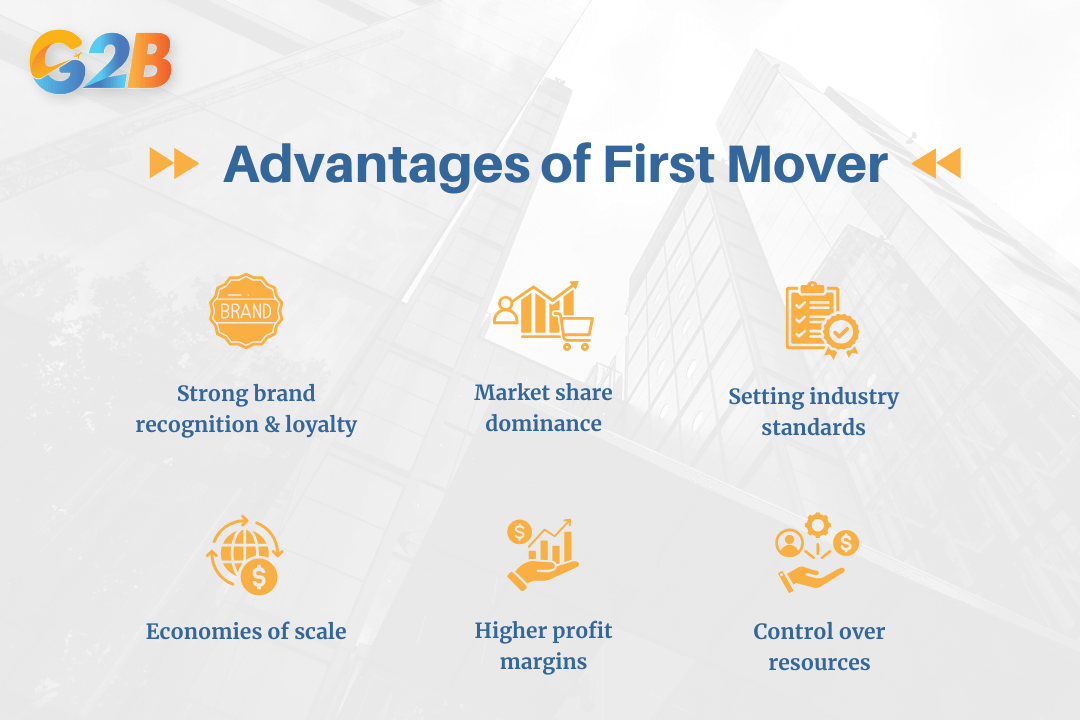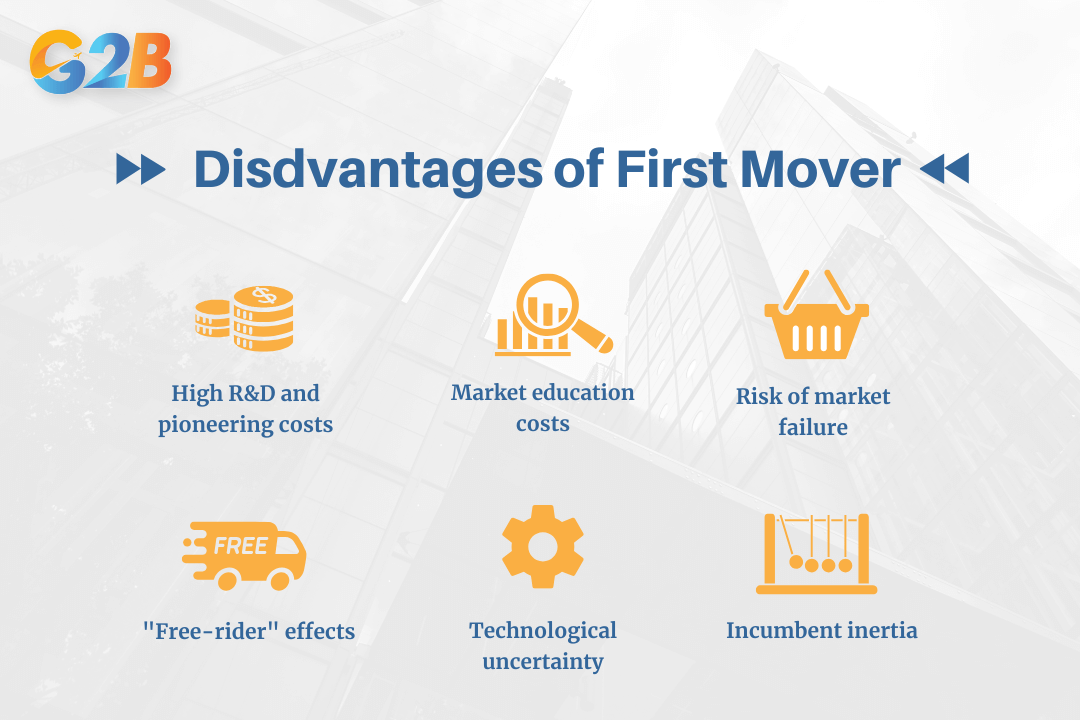First mover advantages represent a powerful competitive edge for companies that pioneer new markets. The ability to enter an uncontested space allows a business to define an industry, capture significant market share, and build a lasting brand identity before competitors even arrive. This strategy, however, is not without substantial risks that demand careful consideration. Let’s delve into what it truly means to be a market pioneer, the benefits that can be reaped, and the potential pitfalls that can lead to failure, offering a complete picture for any business leader considering this strategic path.
This article outlines the key aspects of the First Mover Advantage to help businesses gain a clearer understanding of its definition, significance, and practical implications. We specialize in company formation services in Vietnam and do not provide strategic consulting or investment advice. For specific matters related to accounting, taxation, or business strategy, please consult a qualified legal or financial expert.
What is a first mover?
A first mover is a company that gains a competitive advantage by being the first to enter a market segment as its initial significant occupant. This early entry allows the company to establish strong brand recognition, build customer loyalty, and secure key resources ahead of any subsequent competitors. By introducing a new product or service, the first mover has the unique opportunity to shape consumer preferences and become synonymous with the new category.
This pioneering effort is often associated with a "blue ocean strategy," where a company creates a new, uncontested market space, effectively making the competition irrelevant, at least temporarily. This approach allows the business to operate without the intense pressures of a saturated, or "red ocean," market. It's important to note that a first mover isn't necessarily the inventor of a concept, but rather the first to achieve significant scale and commercial success.
Real case study about the first mover
To truly grasp the impact of a first-mover strategy, examining companies that have successfully leveraged this approach provides invaluable insight. These businesses didn't just launch a product; they created and defined entire industries.
Amazon: The e-commerce and cloud computing titan
Amazon is a prime example of a company that used its first-mover position to achieve massive scale and market dominance. By being one of the earliest significant online retailers, it fundamentally shaped modern e-commerce.
- Pioneering online retail: Launching in 1995 as "Earth's biggest bookstore," Amazon was not the absolute first online bookseller, but it was the first to pursue scale aggressively. This early focus allowed it to capture a vast customer base before traditional retailers adapted to the digital landscape.
- Building a logistics powerhouse: The head start in e-commerce enabled Amazon to invest heavily in building a sophisticated and unparalleled logistics and distribution network. This infrastructure created a massive barrier to entry for later competitors, who could not easily replicate the speed and efficiency of Amazon's delivery systems.
- Expanding into a marketplace: Amazon leveraged its initial success and customer trust to evolve from a bookseller into the "everything store." It expanded its product categories and opened its platform to third-party sellers, creating a network effect where more sellers attracted more buyers, and vice versa.
- Innovating with AWS: In a pivotal move, Amazon leveraged its internal computing infrastructure to launch Amazon Web Services (AWS) in 2006. By being the first to offer a comprehensive and scalable cloud computing platform to the public, it created an entirely new market, which it continues to dominate today.
Coca-Cola: Defining the beverage industry
Coca-Cola stands as a testament to the enduring power of being the first to capture the public's imagination and taste buds. Its brand is one of the most recognized globally, a direct result of its early market entry.
- Establishing the "Cola" category: Introduced in the late 19th century, Coca-Cola effectively created and defined the cola soft drink category. For decades, its brand was virtually synonymous with the product itself, giving it an immense head start before major competitors like Pepsi entered the market.
- Early market share dominance: By being the first to achieve widespread popularity, Coca-Cola secured a dominant market share. This early lead in customer adoption and loyalty proved difficult for subsequent entrants to overcome.
- Creating a global distribution network: Coca-Cola's early start allowed it to build an extensive global bottling and distribution network. This control over supply chains ensured its product was available in more locations than any competitor, solidifying its market position across the world.
Procter & Gamble (P&G): A legacy of category creation
Procter & Gamble has built its empire by being a serial first mover, repeatedly identifying consumer needs and creating new product categories to meet them.
- Ivory soap (1879): P&G's first major success was one of the first soaps promoted for its purity and mildness. The innovative discovery that it floated in water made it a household name and distinguished it from all other soaps on the market.
- Tide (1946): After years of research, P&G introduced Tide as the world's first heavy-duty synthetic detergent. This innovation fundamentally changed the laundry industry, offering a cleaning power that soaps could not match, and Tide quickly became the market leader.
- Pampers (1961): P&G pioneered the disposable diaper category with the launch of Pampers. Before Pampers, parents relied exclusively on cloth diapers. By creating a convenient, single-use alternative, P&G opened up a massive new market that it has led for decades.
Advantages and disadvantages of first mover
Embarking on a first-mover strategy is a classic high-risk, high-reward proposition. While the potential upsides can redefine a company's future and an entire industry, the path is fraught with significant challenges and costs.
Advantages
Being the first to market can bestow a powerful and lasting competitive edge. These benefits often compound, creating a formidable barrier to entry for those who follow.
- Strong brand recognition and loyalty: The first mover has the unique opportunity to become inextricably linked with the new product category. This creates powerful brand recognition and allows the company to shape consumer preferences, fostering deep-seated customer loyalty that is difficult for later entrants to break.
- Market share dominance: By entering an uncontested market, the first mover can capture a significant portion of the market share before any competition arises. This early dominance can lead to long-term leadership, as customers become accustomed to the pioneer's product.
- Setting industry standards: The first mover is in a prime position to establish the technical standards, product features, and pricing models for the entire industry. Subsequent competitors are often forced to adapt to these established norms, giving the pioneer a lasting influence over the market's direction.
- Economies of scale: As the first to build production and distribution capabilities, the pioneer can achieve economies of scale more quickly. This experience leads to a cost advantage over later entrants, who must start further back on the learning curve and at a smaller scale.
- Higher profit margins: With no initial competition, first movers can often command higher prices and achieve better profit margins. They have the freedom to set the market price without the downward pressure from rival companies.
- Control over resources: The first entrant can secure preferential access to or control over essential resources. This includes locking in favorable contracts with key suppliers, acquiring patents, claiming strategic locations, or hiring the top talent in a new field.

A first mover holds several advantages that can strengthen its position in the market
Disadvantages
While the rewards are tempting, the risks of being a pioneer are substantial. The costs and uncertainties borne by the first mover can sometimes pave the way for a more successful "fast follower."
- High R&D and pioneering costs: First movers bear the full burden of research and development costs without any guarantee of success. These pioneering costs also include the significant expenses related to educating the market and navigating unforeseen challenges in a new business environment.
- Market education costs: The pioneer must invest heavily in educating consumers about a new product or service category. This process of creating awareness and changing consumer behavior can be expensive and time-consuming, while later entrants benefit from these now-informed buyers.
- Risk of market failure: There is no certainty that a market even exists for the new innovation. The first mover faces the significant risk that consumers may not adopt the product, leading to substantial financial losses and a failed venture.
- "Free-rider" effects: Competitors, often called "fast followers" or "second movers," can learn from the first mover's successes and, more importantly, their mistakes. These followers can often reverse-engineer the product, avoid the pioneer's missteps, and enter the market with a more refined or cheaper offering, effectively "free-riding" on the first mover's investment.
- Technological uncertainty: The initial technology chosen by the first mover may be quickly surpassed by superior, more efficient, or cheaper alternatives. A fast follower can leverage these newer technologies to leapfrog the pioneer, leaving the first mover locked into an outdated and less competitive platform.
- Incumbent inertia: As the market evolves, the first mover can sometimes become complacent or too committed to its initial successful formula. This "incumbent inertia" can make it difficult to adapt to new threats or changing consumer demands, allowing more agile followers to seize the advantage.

A first mover also faces certain disadvantages that can affect long-term success
The pursuit of a first-mover advantage is a defining strategic decision that can lead to unparalleled success or significant failure. The primary trade-off for a first mover is between capturing market dominance and bearing the high costs of market education. As demonstrated by giants like Amazon and Coca-Cola, successfully pioneering a new market can build an enduring legacy of brand recognition, customer loyalty, and market leadership. However, these rewards are balanced on a knife-edge of risk, including massive initial investment, the burden of educating an entire market, and the constant threat of agile "fast followers" who can learn from the pioneer's inevitable mistakes.


 Delaware (USA)
Delaware (USA)  Vietnam
Vietnam  Singapore
Singapore  Hong Kong
Hong Kong  United Kingdom
United Kingdom 
